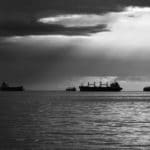Possible Strategies for Risk Prevention on Maritime Assets

Ships play a crucial role in global trade, transportation, and exploration. However, their operations are inherently exposed to various risks, ranging from maritime accidents to piracy, war and environmental hazards. Implementing effective risk prevention strategies is essential to ensure the safety of hull & machinery, crew, cargo, and the marine environment. This essay will discuss key risk prevention strategies that can be employed on ships to minimize potential hazards and ensure safe and smooth sailing.
1. Competency and Crew Training.
The foundation of any risk prevention strategy begins with a well-trained and competent crew. Proper training ensures that seafarers possess the necessary knowledge and skills to handle emergencies effectively. Regular drills, exercises, and simulations help them respond promptly to potential risks, such as fires, collisions, machinery and cargo handling equipment damages, or man-overboard situations. Continuous education and certification updates also keep the crew up-to-date with the latest safety regulations and best practices.
2.International Regulations and Compliance:
Adherence to international maritime regulations, such as the International Maritime Organization’s (IMO) conventions and guidelines, is vital for risk prevention. Compliance ensures that ships are equipped with necessary safety equipment, maintain proper operational standards, and follow safety protocols. Compliance also extends to environmental regulations to minimize the impact of ship operations on marine ecosystems.
3. Risk Assessment and Management:
Conducting thorough risk assessments is essential to identify potential hazards and vulnerabilities on ships. This involves analyzing the ship’s design, her hull & machinery condition, operational procedures, cargo handling, and navigational routes. With this information, ship operators can develop comprehensive risk management plans that include preventive measures, contingency plans, and response protocols for various scenarios.
4. Use of Advanced Navigational Aids:
Equipping ships with modern navigational aids enhances their ability to navigate safely through challenging waters. Global Positioning Systems (GPS), radar systems, Electronic Chart Display and Information Systems (ECDIS), and Automatic Identification System (AIS) improve situational awareness, thereby reducing the risk of collisions and groundings.
5. Safety Equipment and Maintenance:
Regular maintenance and inspection of safety equipment, including lifeboats, fire-fighting systems, and communication devices, are imperative for their optimal functionality during emergencies. Ensuring that safety equipment is properly maintained can make a significant difference in handling critical situations effectively.
6. How about Cybersecurity:
With the increasing digitization and automation on ships, cybersecurity becomes a crucial aspect of risk prevention. Protecting onboard systems from cyber threats is essential to prevent unauthorized access or interference that could lead to accidents or operational disruptions.
7. Security Measures against Piracy and Terrorism:
Ships traveling through high-risk areas must implement security measures to deter piracy and protect vessel, crew and cargo. Hiring onboard security personnel, adopting Best Management Practices (BMP), and adhering to the International Ship and Port Facility Security (ISPS) Code are essential components of a comprehensive security strategy.
In conclusion, risk prevention strategies on ships are paramount to ensure safe and efficient maritime operations. A well-trained crew, compliance with international regulations, risk assessments, advanced navigational aids, proper maintenance of Hull & Machinery and safety equipment, cybersecurity, and security measures against piracy are all integral components of an effective risk prevention plan which is always well appreciated and evaluated by Marine insurance Underwriters, prior to undertaking a new Marine risk and premium calculation. By implementing these strategies, ship operators can mitigate potential hazards, protect hull & machinery, crew and cargo, and preserve the marine environment for sustainable shipping practices in the future.
Source: By Mr Harilaos Petrakakos, Director – Senior Surveyor of P&P Marine Consultants Inc., Member of Marasco Marine Ltd, Advisors’ Board www.marasco-marine.com

